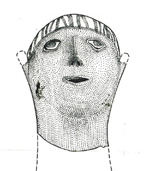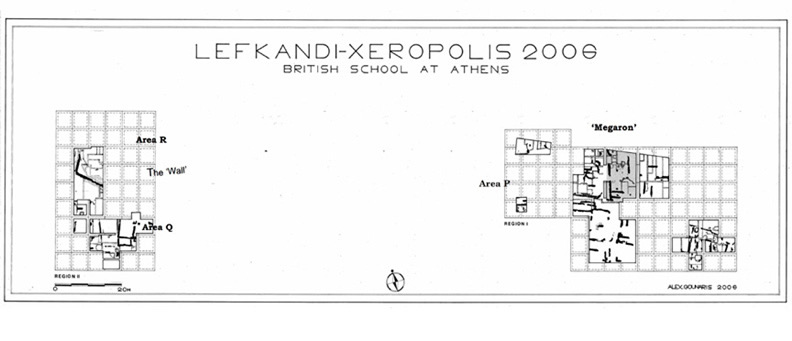
LEFKANDI-XEROPOLIS 2006 SEASON
 |
The team:
Director: Irene S. Lemos (Oxford)
Field Sub-Director: Dr Doniert Evely (BSA)
Trench Supervisors:
Dr Katerina Kolotourou (Edinburgh); Dr Antonios Kotsonas (London and Rethymno);
Antonia Livieratou (Edinburgh); David Mitchell (Oxford); Tom Midgley (Oxford);
Dr Marina Thomatos (New York)
Trench and Apotheke Assistants:
Christina Bouthhillier (Ontario/Cambridge); Thomas Buckingham (Oxford);
James Button (London); Tim Chubb (Oxford); Anna Dugdale (London); Sabine
Geissler (Edinburgh); Artemis Georgiou (Oxford); Kristin Leith (London);
Eleftheria Pappa (Oxford); Allison Siegenthaler (Bryn Mawr); Rachel Tod
(Oxford); John Tully (Oxford/Harvard); Sarah Wandless(Oxford); Craig Walsh
(Oxford)
Apotheke coordinator: Holly Parton (BSA)
Pottery specialist: Dr Irene S Lemos
Architect: Dr Alexandros Gounaris (B’ Ephoreia, Attica/ University
of Thessaly)
Surveyor: Theodore Hadjitheodorou (Ephoreia of Paleontology and Caves)
Archaeobotanology: Georgia Kotzamani (Ephoreia of Paleontology and Caves);
Alex Livarda (Leicester)
Conservators: Nadia Tastouli (Cardiff); Ageliki Kostaki (Cardiff)
Draftswomen: Roxana Duscan; Katerina Mavraganis
 |
Preliminary Report 2006
In 2006 (from 25 July to 15 September 2006) both Regions I and II were extensively investigated. In total some 25 trenches were excavated, equivalent to 650 m2.
This year we have made a number of significant discoveries in both Regions; they allow us to appreciate better the great importance of the settlement during the end of the Late Bronze and the early stages of Early Iron Age. Moreover we have made progress in answering the questions which were set out at the beginning of research on Xeropolis. Lefkandi, however, is the site of surprises and this year’s finds illustrate that unexpected discoveries can be found not only in the cemeteries of the area but also on Xeropolis.
The 2006 excavation produced 844 pottery excavated units. The in situ study of the pottery by the Director provided preliminary dates and also a statistical and a digital record. The most impressive finds, including the figurines found in Area R, were all restored by the conservators and handed to the Ephor at the Museum of Eretria. The other bulk finds were bone and shell. Samples of charcoal, ochre, mudbrick, ceramic building material and plaster were also taken. Finally, the majority of worthwhile contexts were sampled for their environmental information. Some 118 soil samples were processed this year.
At the end of the season the site was fenced to protect it from visitors on the hill and animals herding in the winter and the spring. The wall built by the workmen in 2003 to the east of the deep ‘old section’ was extended this year to protect the larger area. In both Region I and II, standing walls were rendered sensitively and other walls were covered with protecting cloth and earth.
In many respects this season has started to see the fruition of the work undertaken in 2003 and 2004, as well as the scientific work (geoarchaeological investigation and geophysical survey) and study in 2005. As a result we have had a very successful year and have been able to fill a number of the gaps in our understanding of the Early Iron Age on Xeropolis.

|
Home > New Excavations >2006 Season> 2006 Season Region II